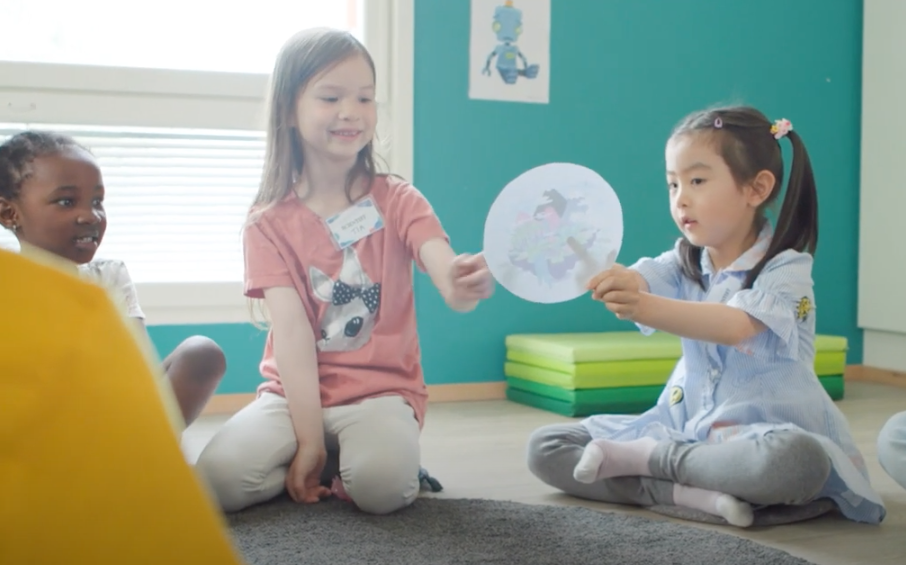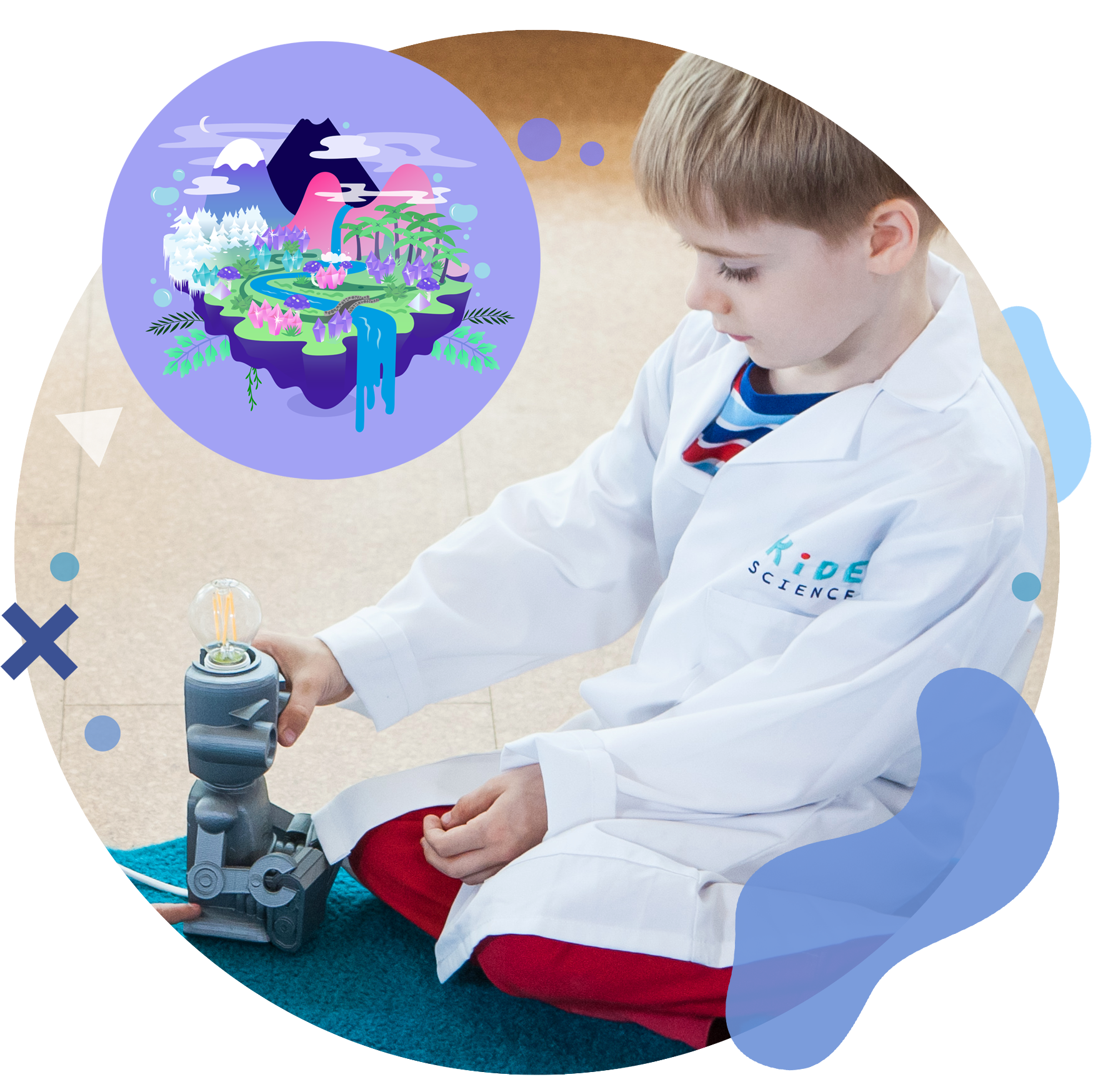5 Steps to Incorporate Play in the Classroom
There's so many ways you can teach through play, here are some concrete examples of play based learning in the classroom.
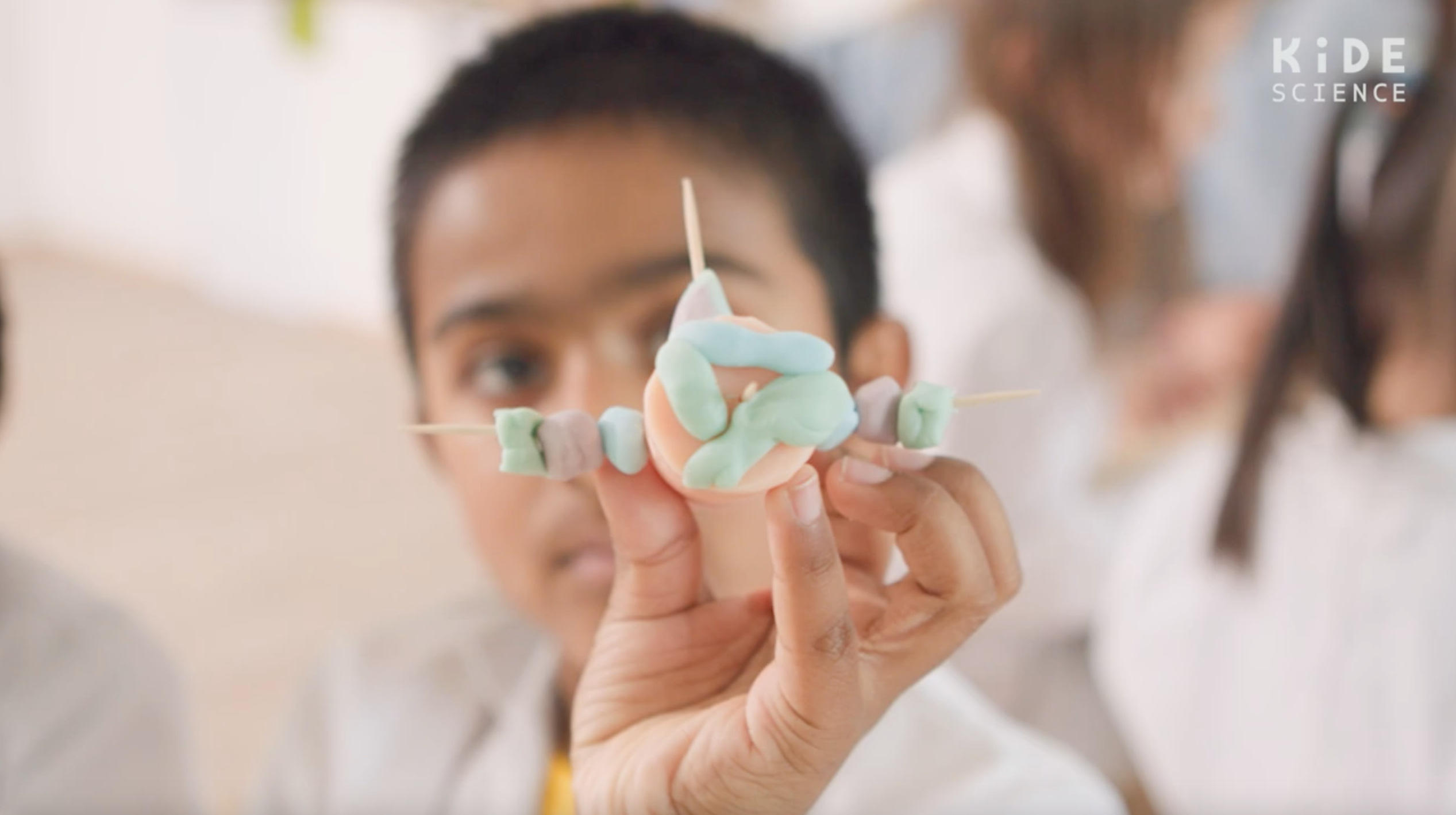
Why should I incorporate play in the classroom?
Play-based learning isn’t all play and no work – it’s quite the opposite.
It’s the developmentally appropriate way for children to both have fun and learn crucial skills along the way.
Play helps children with skills like reading, communication, problem-solving, and self-exploration by engaging them at their level. In a play-based setting, they’re given the context they need to deeply understand complex topics and skills, and it all hinges on the vivid imaginations they still have as children.
So, how can you incorporate play into your classroom or homeschool environment?
We boiled it down to 5 steps – and they’re probably a lot more simple than you think.

Step 1: Pick an activity based on children’s interests
Start by listening to what your little ones are interested in. Are they e.g. wondering why some structures stay upright while some don't?
After figuring out what they’re passionate about, look for a playful activity that revolves around that topic. You’ll want to assess what material you’ll need, too. Usually, materials for simple activities tend to be objects you already have lying around the house.
A good place to practice this in action is with Kide Science, where you can try searching through 100s of activities for a specific lesson. In the examples below, we’ll be looking for lessons about ‘engineering’, but you could also use search terms like ‘building’ or ‘structures’.
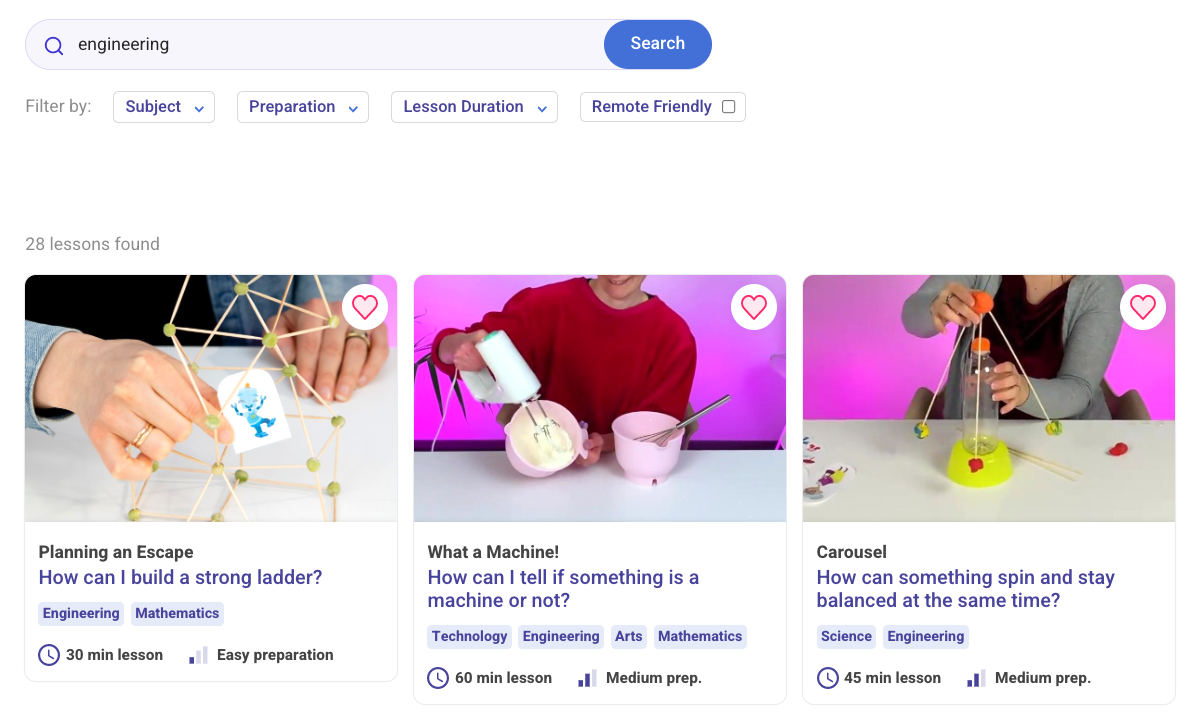
Step 2: Start with a story and set the stage
Once you’ve found your perfect activity, your next goal is to help children to find it meaningful. The best way to do this is to use a story.
Research shows stories are vital to capturing children’s attention.
To really immerse children, it’s important to set some ground rules for these stories. For example, you can make a rule to visualize how you’re now in your imaginary role. This is called role changing, and it’s great for signifying that you’re now in play and exploration mode.
Here’s a couple of ways to help your children immerse:
- A good example of a role change is a “researcher spin” where you intentionally spin to indicate your new role. Before you and the little ones did your research spin, you were a teacher and students – but after, you’re now researchers ready to explore and find out whether or not you can make triangular or square bubbles.
- Another way to set the stage is introducing them to some of the rules of the imaginary land you’re in. Think of things like: What is the name of this imaginary world? Are the animals the same? Who are some of the wacky creatures and characters, and how can we communicate with them?
Doing some of the legwork of setting the stage has a big payoff, you’re helping add context and make it more believable for little ones!
Pro tip: You can also use your own characters or Kide Science’s ready-made storyworld and story-based lesson plans that come with tips to set the stage..png?width=1000&height=687&name=posse2Asset%2016@3x%20(6).png)
Step 3: Introduce the research problem
Now that you’ve picked the perfect lesson and have set the stage for you and the children, it’s time to think about the best possible way to give your little ones a problem to solve.
Introduce what you want the children to explore in a whimsical way.
This step is why it’s important to have imaginary characters picked out (which, by the way, Kide Science already has a cast of characters). They should introduce the research problem in the form of a letter or message.
In the example of “Planning an Escape!”, our dear friend Hoseli, who founds himself in a bit of a pickle – stuck inside a workshop – sends a letter that is read aloud to the children (letter pictured below). When you enable children to “communicate” with the new world and its characters – you engage little ones and give them context that is appropriate for their stage of development.
Many teachers will skip this step and attempt to introduce the research problem by themselves, which is unwise. But by committing to the imaginary characters, you’re triggering their empathy response and activating their brilliant little minds.
Your main responsibility when introducing the research problem is to give the children enough background to solve the issue in the imaginary world using their creativity and exploration to solve the issue, the letter pictured below is a great example of a solid introduction.
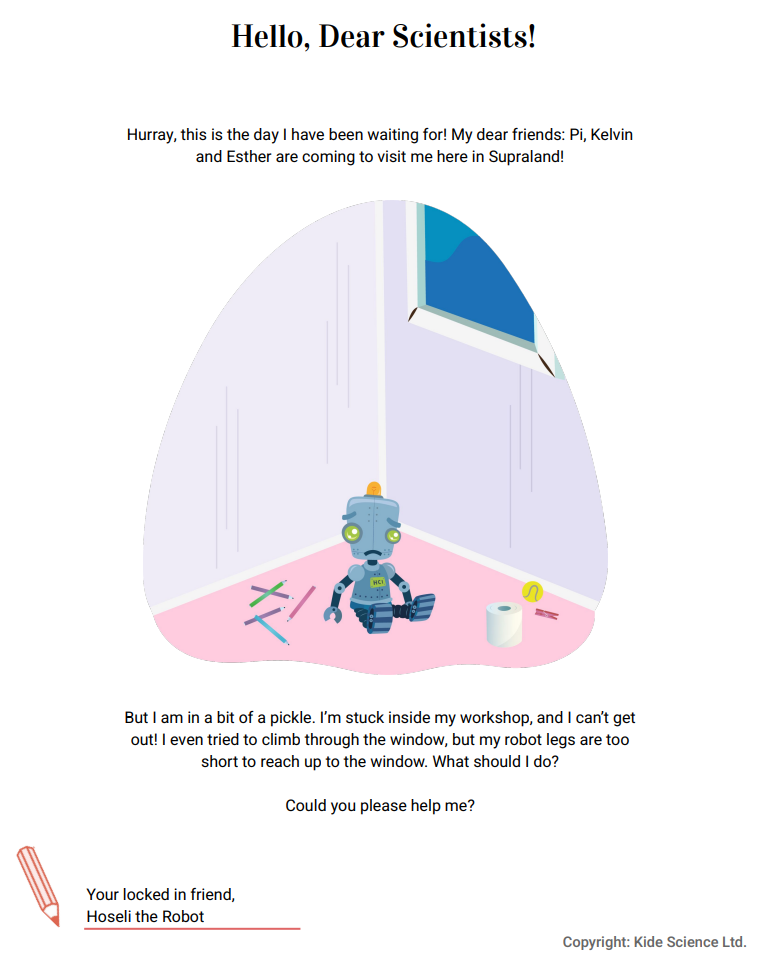
An example letter from this play-based lesson plan about Engineering. You can sign up for free to get access to this super engaging lesson!
Step 4: Enter the imaginary world – and start exploring
You’re now ready to start exploring and solving problems with your little researchers! You’ll notice that this type of play tends to really excite children.
- Start by providing children with the materials you’ve prepared ahead of time. You can use ready-made lesson plans like what Kide Science provides, or the plan you constructed in Step 1 to guide children to discover ways to solve the problem together.
- Include things like manipulatives, games, or science experiments and explore within the context of your play-world.
- Keep up the storyworld with supporting questions. You can also get into the nitty gritty details of the imagination part: What type of researcher can figure out how to best get Hoseli out of the workshop? A mad scientist? A teacher scientist? A chemist ready to make a new concoction?
- Remember to also encourage exploration on their own terms, and allow children to choose who they are and how they’ll explore to give them buy-in and autonomy.
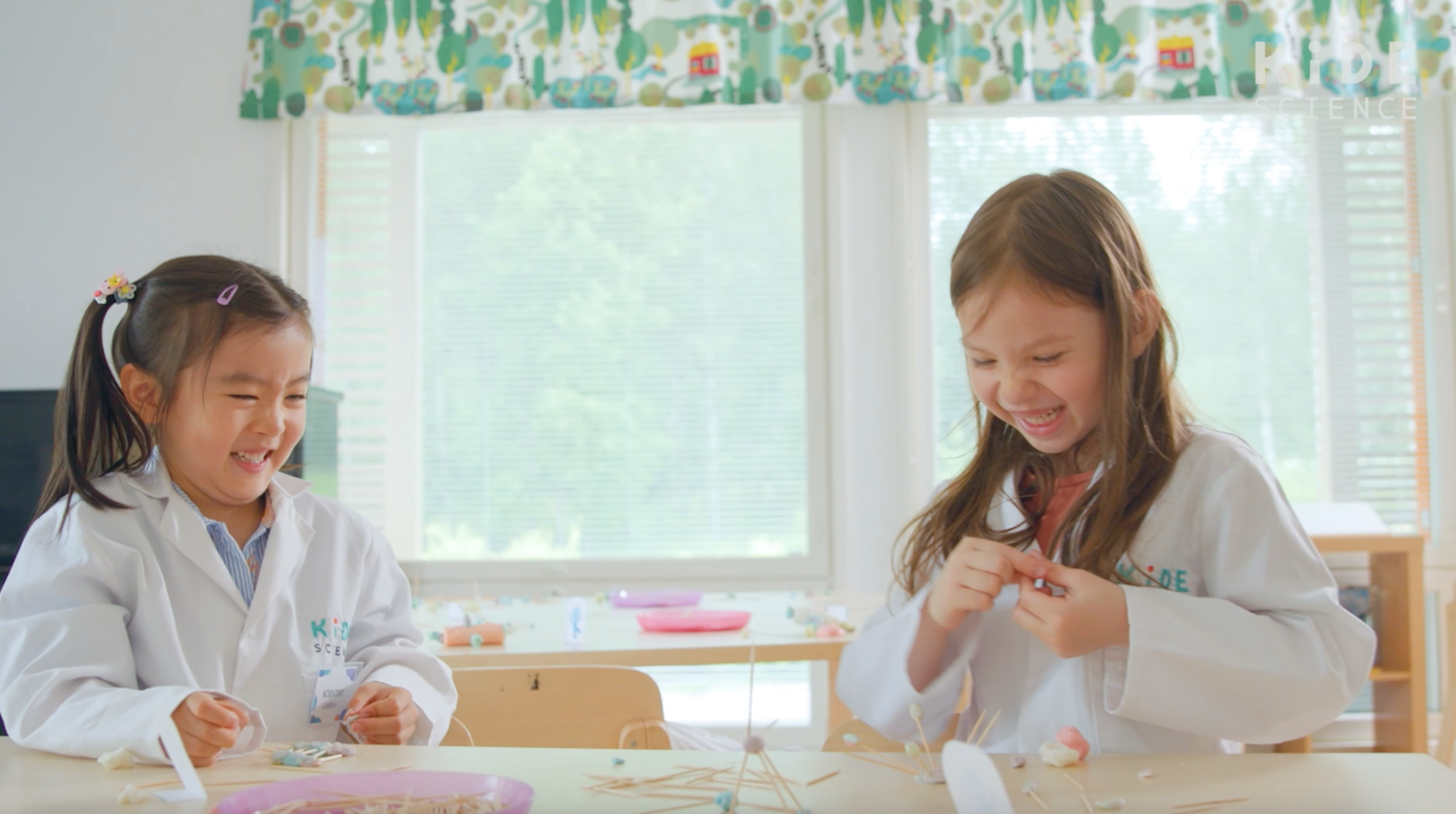
Step 5: Closing the play
At the end of the lesson, the children will feel like they were active learners.
Now's the time to figure out what they’ve learned.
Remember:
Here, there are no right or wrong answers, they can have different results and findings. The instructor’s job in this step is to participate and guide collaboration, social skills, and communication.
Ask the little ones to gather in a circle, where they will continue to “communicate” with the imaginary world, reporting back to whichever character came to them with a problem. 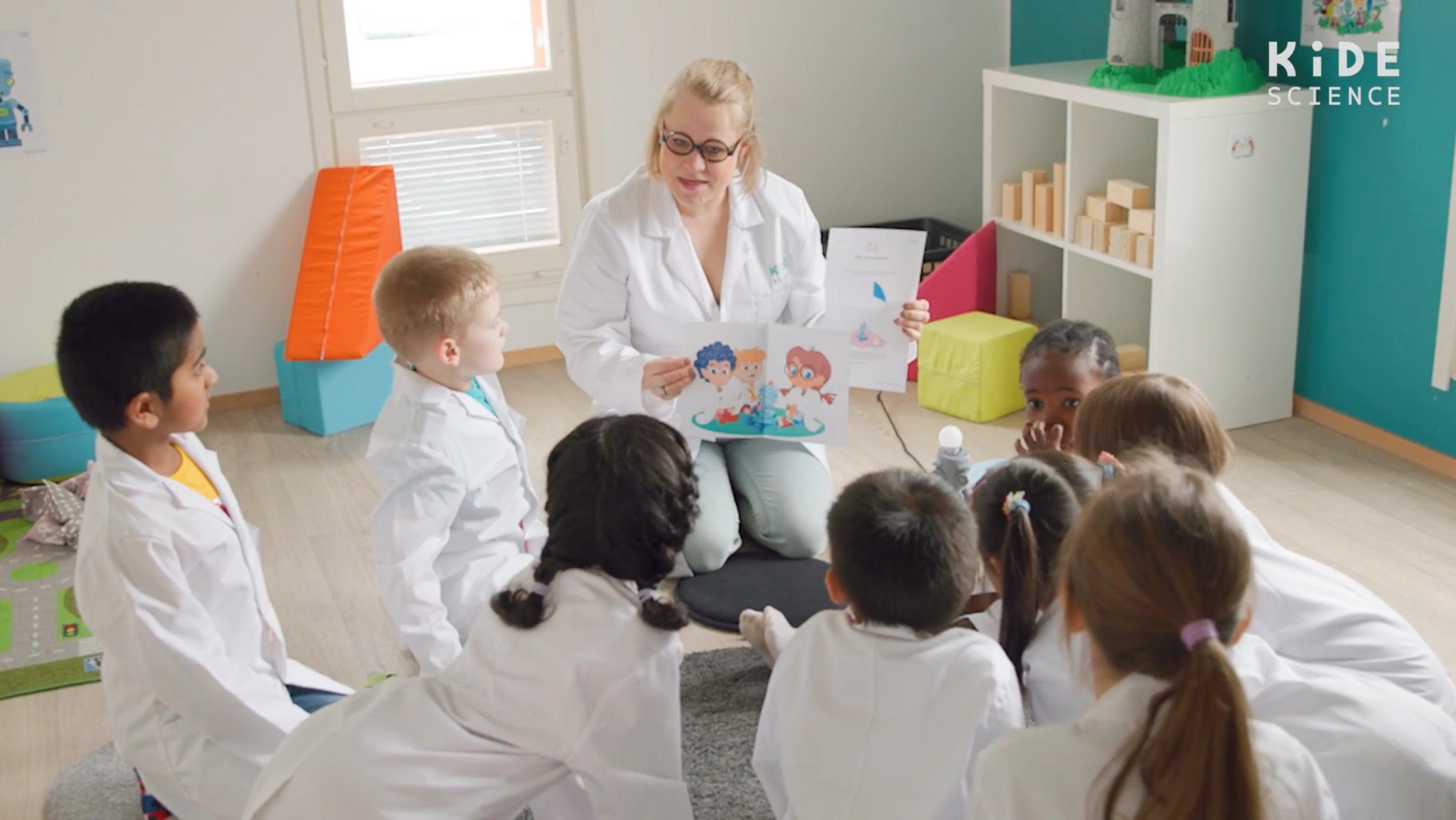
It’s important to have a general routine for all of your play-based lessons, and this guide should give you a great foundation for that routine.
By following these steps into the classroom or homeschool environment, you are genuinely helping to enhance children’s learning and development. Play-based learning helps children practice much more than concrete facts, but also allows them to engage in imaginative adventures.
Want to level up your teaching with stories? Try our story-based lesson plans for free!
.png)
